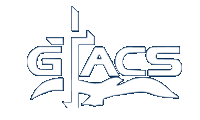WHY WE TEST
For students, carefully selected assessments do the following:
- Serve as diagnostic tools to identify instruction levels and to measure student growth over time.
- Help students take greater ownership of their own learning as learning targets become increasingly clear to them and to help them observe their own progress towards learning goals.
As educators, external assessments serve us in the following ways:
- As tools to assist us in evaluating and fine-tuning our curriculum.
- To increase our instructional effectiveness.
- To help us improve the quality of the classroom level assessments that we use.
The fundamental purpose of assessment is to guide teaching and learning. Important decisions about students are never made on the basis of a single assessment. Information gained from testing contributes to a balanced view of student growth that also includes each student’s daily work, performance on a variety of classroom assessments, and the observations and insights of their teachers.
As testing events approach, we offer parents advice on how to appropriately help children prepare for success. Following each test event, results are shared with students and parents.
Measure of Academic Progress (MAP)
The MAP test is a computerized, adaptive testing instrument used with students in grades 2 to 5 in the areas of reading and mathematics. It is designed to provide two key measures to students and their educators: It identifies student instructional levels relative to a defined Learning Continuum, and it measures student academic growth over time. As such, it has great potential to directly affect instruction and student achievement.
Because the tests are adaptive and individualized, each student has the same opportunity to succeed and maintain a positive attitude toward testing. MAP tests give us detailed, accurate information about your child’s growth. We are then able to focus on every child’s individual growth and achievement. Partnering to help all children learn, parents and teachers can have a profound positive effect on academic achievement. For more information on resources for parents you can access the NWEA website.
AIMSWeb
As our children grow many doctors weigh our children and measure how tall they are. This information is often put on a chart. This chart shows where our child stands compared to other children and how fast they are growing. These charts help doctors to understand if our children are growing properly or if something may be wrong, enabling them to do something to help as soon as possible. Doctors use children’s height and weight as “Well Checks”, or vital signs of development. We all know how important it is for our children to “grow” in reading as well. In fact, successfully learning to read at an early age is probably one of the most important factors in a child’s learning, both inside and outside of school.
Because reading and reading growth are so important, our school administers “Well Checks” for reading on a regular basis. We do this with a screening and progress-monitoring tool called AIMSWeb through the 8th grade. This literacy-testing tool is designed to provide information about where students are in comprehension and fluency relative to national grade level norms. All students are benchmarked three times a year (fall, winter, and spring).
The reading probes are simple and accurate. We have your child read three stories from passages comparable to their grade level, and we count the words they read correctly, as well as how well they read the stories. Comprehension is also assessed through a MAZE Comprehension tool. We like to think of it as taking your child’s reading temperature. Your child’s data is tracked and recorded in web-based software from AIMSWeb. From there we can produce many reports that give us a clear picture of your child’s progress. As you can imagine, AIMSWeb is quite a powerful and informative tool that allows us to focus on individual student growth.
NCEA: ACRE
The National Catholic Education Association’s Assessment of Catechesis and Religious Education (ACRE) is given to students in grades 5, 8, 11 and 12. This test helps schools assess the faith knowledge and attitudes of students in an effort to improve curriculum and instruction.
ACT: Aspire and Pre-ACT
ASPIRE and Pre-ACT assessments are vertically aligned tests that monitor progress in the context of ACT college readiness. Just like ACT, students take the English, Reading, Writing, Math, and Science. Online reporting allows teachers to view readiness benchmarks and national norms for all students. Because the tests are reliable predictors of success on the ACT, the results will be used to help students, parents and counselors set goals and to establish their high school program of study. The ASPIRE is given in grades 6-8 and Pre-ACT in grades 9-10.
ACT
Based on a set of College Readiness Standards, the ACT is the most widely accepted college entrance test. It is taken by 11th and 12th graders to measure academic readiness to make a successful transition to college. Students may take the test multiple times in an effort to improve their score, broaden their college options and qualify for scholarships and grants.
- ACT Parent Letter – updated July 20, 2017

